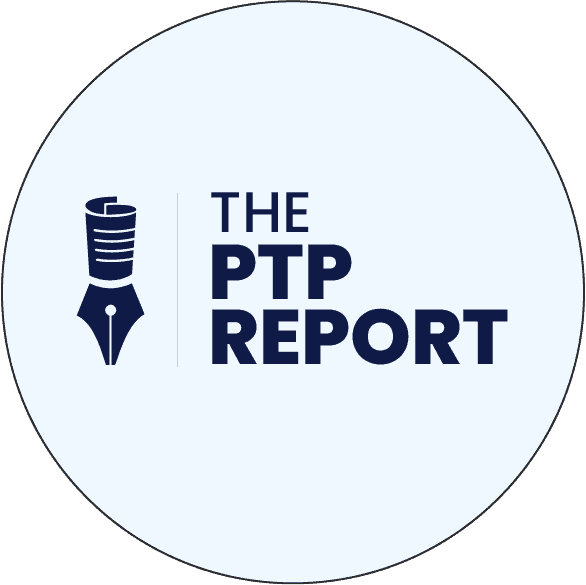(This is Part 2 of a two-part series about hiring for cultural fit. To read Part 1, visit: (https://www.ptechpartners.com/2021/11/16/hiring-for-cultural-fit-the-benefits/)
In the last blog, we discussed how hiring for cultural fit could help you identify committed, engaged individuals, who will help your organization grow. Candidates who share your organization’s professional beliefs and goals, will assimilate well within your workplace and quickly become an asset.
Understanding your company’s cultural needs and hiring for it, can be a blessing.
But, if you get it wrong, hiring for cultural fit is a curse.
There are some significant pitfalls to giving excessive emphasis to cultural fitness when reviewing candidates. It’s important to constantly evaluate the metrics by which a candidate is deemed to “fit” with the organizational culture and the circumstances in which a candidate’s skill-set will be prized over their cultural fitness. Otherwise, cultural fitness can become a drawback. It can create a stagnant workplace where individuals are hired for this personality or personal background, rather than their skills. You could wind up with underqualified employees who limit your organization’s potential for cultural evolution.
What are the perils of hiring for culture fit?
It is good to have likable colleagues, and you should always be on the watch for any personality red flags when interviewing candidates. That being said, you need to remember that you are hiring an employee, not looking to make a new best friend. If you hire on personality match alone, you might reject strong candidates with the right skillset based on an incompatible personality.
Understanding your company culture is a trickier proposition than most people realize. In organizations with strong workplace cultures, it is easier to identify a common culture because they will have been codified early and enforced uniformly throughout the company.
But in smaller, more ad hoc organizations, identifying a core thread of values or value systems that permeate the business will be harder. A recent study revealed that over 80% of hiring managers agree that a ‘cultural fit’ is essential in candidates but less than 50% of executives have a clear idea of what their company’s culture actually is.
When you attempt to hire for culture fit without fully understanding the cultural needs of your organization, you might end up accidentally hiring employees who will take you further from your goals rather than closer to them.
When you only hire people you feel a personal connection with, you run the risk of eliminating diversity from your organization. Both diversity of thought and diversity of background. If you only look for people who share your personal beliefs, interests, or culture, you might end up discriminating against skilled candidates from different backgrounds.
For example, a personal connection between a candidate and the hiring manager—hailing from the same town or attending the same university—can be mistaken for an alignment between the candidate and the company.
If the idea of a good candidate is someone who fits in well with the existing work culture, you stymie any chances of evolution within the culture. You might end up with a homogenous workspace, full of employees who get along with each other but don’t do much to improve on any existing deficiencies and continue to peddle the status quo.
To overcome workplace biases, you need a regular injection of fresh ideas. Turnover isn’t just about personnel change. It also brings a change in perspectives. By hiring candidates who closely match the existing culture, you will miss out on opportunities to change existing biases. It’s only a matter of time before a lack of new thought will result in a lack of innovation.
RELATED: How Leaders Build Trust
Hiring for cultural fit the right way
This is harder than you think. Most companies that are led by their founders tend to define their values by the values of their leaders. This might work for smaller organizations but as your company grows, so will the size and diversity of your leadership. This will make it harder to define a specific set of values that apply company-wide.
When you find your company culture losing its identity, make the time to bring your leaders together to workshop it. Large organizations cannot afford to be heavily centralized, without losing some measure of efficiency. Review the goals and processes of all your departments regularly, especially those processes that are unspoken or mutually understood without codification, and see if they continue to be beneficial to the company.
Once your executives have a handle on the company culture, they can then identify candidates who suit it.
A good way to avoid unconscious biases impacting the candidate selection process is to have a clear idea of your candidate’s profile before reviewing applications. By drawing up a common framework by which all applications are reviewed, you can ensure that the process will be fair.
When creating this framework, consciously exclude those metrics which could lead to cultural or in-group biases, such as the candidate’s hometown, university, or first language.
Diversity is essential for evolution. A study by Harvard Business Review revealed that companies with above-average diversity in their ranks were 19% more innovative than their contemporaries.
Hiring for culture fit is not about finding candidates who match your existing culture. Rather, it is about finding candidates who understand your larger goals and values and have the skills necessary to help you accomplish them. If you find your cultural hiring strategies conflicting with your ability to diversify your team, make a tough decision and change your cultural hiring policy. Ultimately, it will pay higher dividends for your organization.
Conclusion
Hiring for culture fit is a challenge. Done right it can be a great team-building tool, a way to put the right people in the right roles, where they can make valuable contributions to the organization and advance their careers.
Get it wrong, however, and you will have to contend with dissatisfied employees, underperforming teams, and the possibility of your company culture falling off an evolutionary cliff edge.
The best way to engage with company culture in your hiring process is to remember that:
1) Cultural fit is only one metric by which you should judge candidates.
2) You need to first define your company culture and tie it to your larger corporate strategy. This ensures that your cultural fit hires help you grow in the right direction.
3) If you want to keep your company culture evolving and growing, you need to be willing to abandon hiring for cultural fit in favor of hiring for diversity, when necessary.
Cultural fit is a tough concept to nail down at the best of times. Hiring for cultural fit is equally hard to strategize for. But it can be done. The next time you want to develop a cultural fit hiring strategy, try using keeping these lessons in mind and you’ll have an easier time of it.
PTP helps you in hiring the top IT talent.
Let us connect you with the strongest candidates to help meet your goals; say hello@ptechpartners.com or contact us here.
About the Company:
Peterson Technology Partners (PTP) has partnered with some of the biggest Fortune brands to offer excellence of service and best-in-class team building for the last 25 years.
PTP’s diverse and global team of recruiting, consulting, and project development experts specialize in a variety of IT competencies which include:
- Cybersecurity
- DevOps
- Cloud Computing
- Data Science
- AI/ML
- Salesforce Optimization
- VR/AR
Peterson Technology Partners is an equal opportunities employer. As an industry leader in IT consulting and recruitment, specializing in diversity hiring, we aim to help our clients build equitable workplaces.





